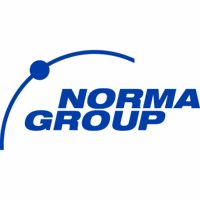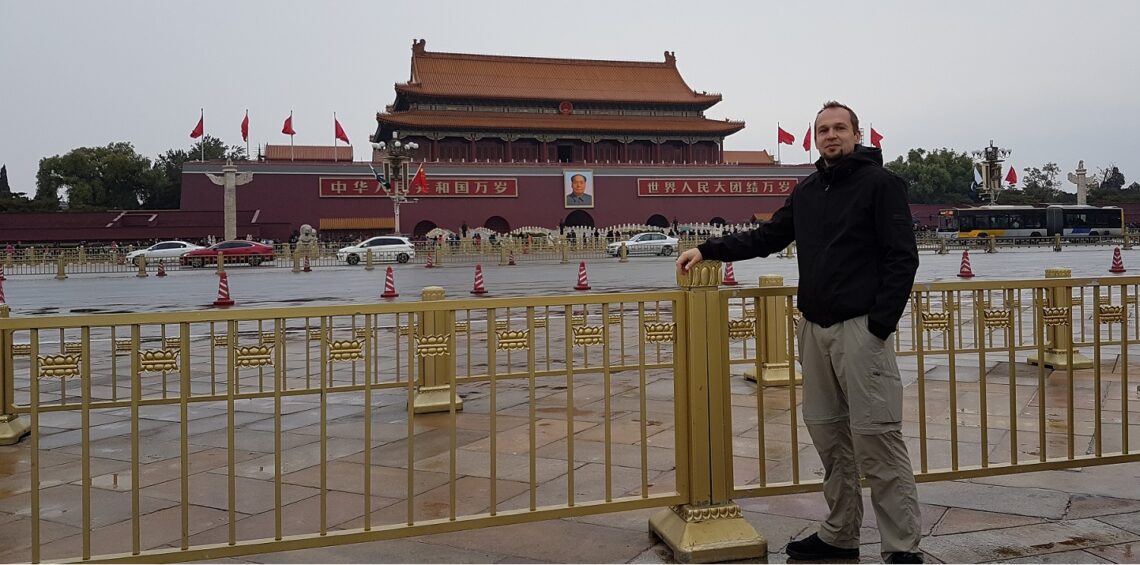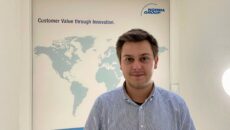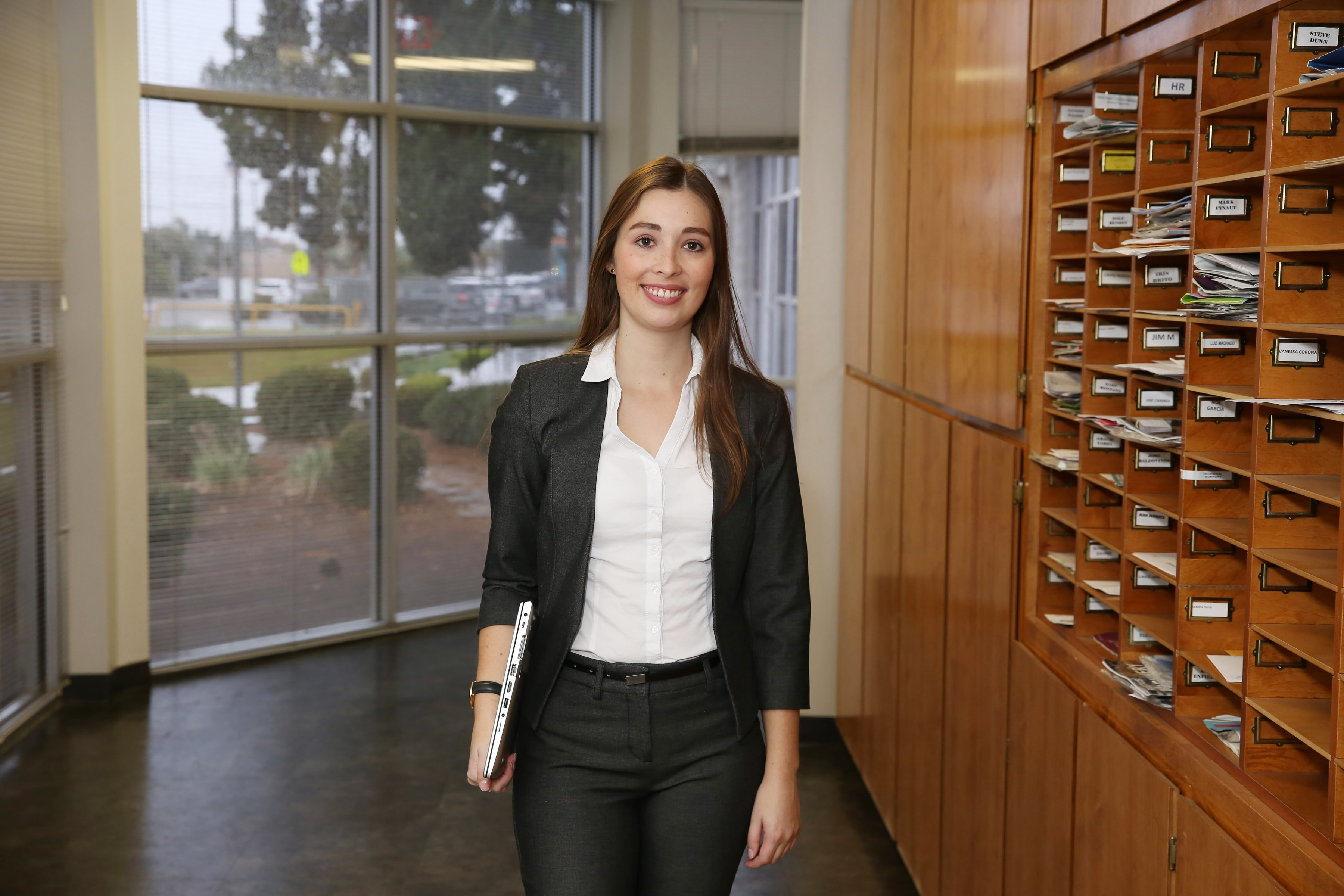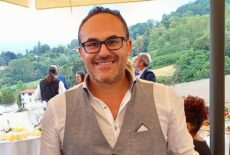This post is also available in: Deutsch
In our NORMAPeople series, employees around the world talk about their day-to-day work, how they came to the company, and what they appreciate most about their jobs.
Hannes Clasen is a Research & Development Engineer at NORMA Group headquarters in Maintal, Germany. In this interview, he talks about his work routine, his most exciting projects and his most memorable experience at NORMA Group.
Hannes, can you tell us about your tasks at NORMA Group?
I mainly work on the development of components for thermal management systems, which are used in electric vehicles. My tasks range from the initial idea through to serial production. One of the things I focus on is the pressure loss optimization of individual components. The use of pressure loss-optimized components in thermal management systems helps to reduce the vehicle’s energy consumption. The vehicles are thus more energy efficient.
How does that work?
Electric cars have a battery that has to be kept within a certain temperature range – if it gets too cold, performance levels drop; if it gets too warm, it ages faster. The thermo-management system, consisting of many pipes running through the car, is there to address this issue. This delivers cold or warm fluid to the battery as needed, which in turn must be pumped through the complex system.
The higher the pressure drop of the system – the more resistance the system offers to the fluid – the more energy is needed to pump the fluid through the pipes. Since the energy for the pumping system is withdrawn from the car battery, a reduced pressure loss means an increased range of vehicles.
What do you like best about your job routine?
I’m involved in product development from the very beginning and get to experience every single step. It’s incredible to see what can be created from a simple idea. I also enjoy the daily contact with colleagues from around the world. This collaboration in an international environment is what I like most and what makes my job routine so varied.
In product development, it is important to avoid frustration. As a rule of thumb, for every 100 ideas you have, ten of them are going to be good. And from those ten, one will be commercially successful. But you also learn from projects that do not succeed. There are always new and interesting projects, which makes my work exciting. You cannot be afraid to fail.
How does the product development process work?
When I started at NORMA Group, I had an important conversation with the Global Product Manager for Electromobility. His job is to determine the direction and set the pace, so he explained the objectives of product development to me. In addition to pressure loss optimization, the topics of cost, weight and installation space optimization, as well as material selection, are important points. We take these points into account when developing new products
The topic of pressure loss optimization can be efficiently addressed with simulations, and our simulation department has a key role to play when assessing new ideas. If the simulation results show that the idea is a possible way to reduce the pressure drop, the respective product experts are contacted. Together we check whether the idea is feasible. If that is the case, the product idea is developed further and subsequently brought to market. Cooperation is key. Various competences are needed for product development, from simulation through to process experts and also including product experts. And then, of course, employees in our plants around the world, using the resources available to them to turn the project into reality.
There are a number of formalities that need to be taken into consideration when it comes to such projects – you can’t just start developing something. We have to make sure that the product idea fits in with our portfolio and strategy and that there is a chance the product will be commercially successful. Development projects are cost-intensive – a lot of money, resources and time go into each product. For this reason, projects of this nature go through a so-called stage-gate process whereby they are divided into various phases. A review is scheduled at the end of each phase. The Steering Committee, consisting of members of the management team, is invited to attend. They then decide on the continuation of a project.
What was the most exciting project you have been involved in?
One of the most exciting projects to date for me is the NORMA Face Shield, a face visor we developed early on in the Corona pandemic. At the time, face coverings were in short supply and we wanted to do our part as a company to change that. It took a mere four weeks from the initial idea to production – including clinical tests at a university hospital. In the development phase, we focused on practical tests and gradual improvements: We presented 3D printed models of the NORMA face shields to the medical staff and used the feedback the same day to optimize our models. These were printed overnight and the customer received the improved model the following day. In the next phase, NORMA Group departments including Product Development, Raw Material Purchasing, Marketing, Sales and Corporate Communications worked together perfectly to organize everything that was needed for serial production. None of this would have been possible without the support from NORMA Group’s management team.
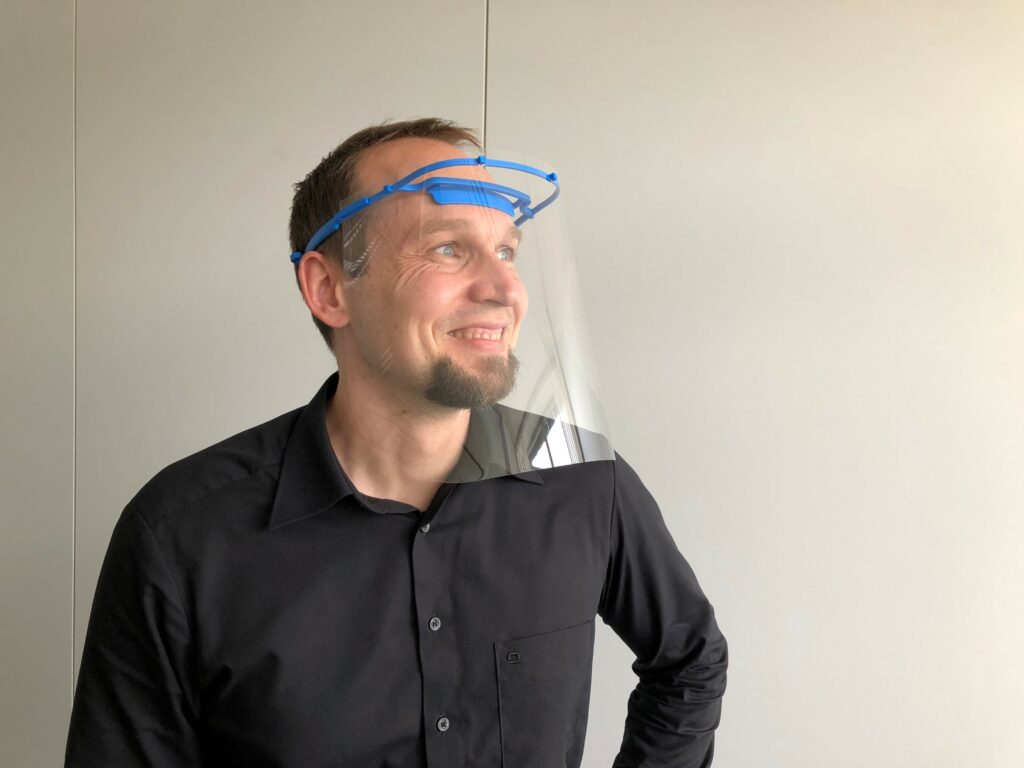
What would you say was your fondest experience at NORMA Group?
The nicest experiences I have had at NORMA Group so far was my bubble assignment in Qingdao, China. China is a fascinating country with friendly people, very good food and a culture that is very different from ours. I was especially impressed by the “hands on” mentality of my Chinese colleagues and the speed at which projects are implemented there. To name just one example: I was eating in the company cafeteria on a Thursday. The following Monday, the cafeteria had been moved to another room and an operational testing laboratory had been set up where the previous cafeteria was located.
What do you like to do in your free time?
My hobbies changed during the Corona pandemic. I really enjoyed hiking during the lockdown. It provided an excellent balance to mobile working. I also like to fly so-called first-person-view (FPV) drones in my free time. The live image of the drone is transmitted to FPV camera glasses and I experience the flight from the perspective of the drone. Last winter I also bought an aquarium that I use to breed butterfly cichlids.
What do you look forward to every morning?
A cup of good, hot coffee.
What goals do you want to achieve in the future?
If we optimize pressure loss in our piping systems, electric cars can be operated more efficiently. By developing these products, NORMA Group can with my help make a contribution to climate protection. My goal is for the products I help develop to become successfully established on the market, while at the same time contributing to NORMA Group’s economic success and protecting the climate.
